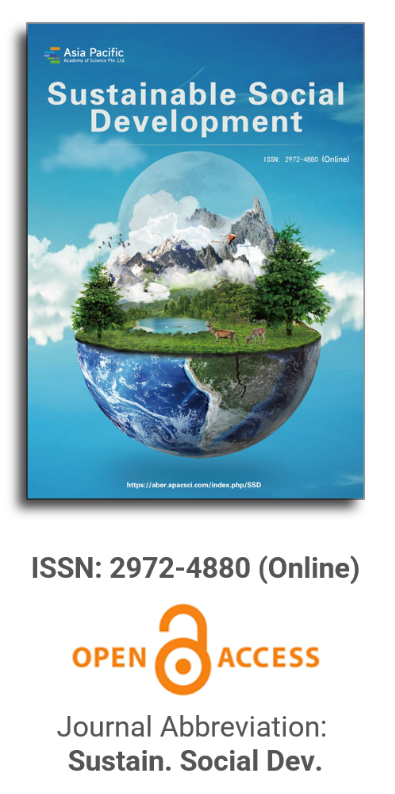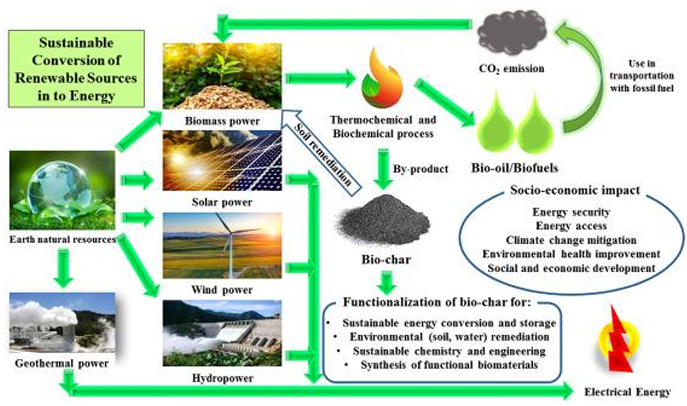
Asia Pacific Academy of Science Pte. Ltd. (APACSCI) specializes in international journal publishing. APACSCI adopts the open access publishing model and provides an important communication bridge for academic groups whose interest fields include engineering, technology, medicine, computer, mathematics, agriculture and forestry, and environment.

Design features of work apparel for nannies’ childcare tasks in families/households for sustainable child’s health in Nigeria
Vol 1, Issue 3, 2023
Download PDF
Abstract
This paper describes the task-related apparel design features involved in developing prototypes for nannies. Clothes that are presently used in childcare tasks do not meet the users’ needs for carrying out activities and tasks in families. This makes their tasks more cumbersome to perform, while comfort, health, and safety are not well guaranteed. Therefore, this work aims at identifying task-related design features and developing prototype nannies’ work apparel that would facilitate babysitting tasks and minimize work hazards while ensuring the comfort, protection, and safety of children and users. A purposeful sampling technique was used to select 293 respondents. Questionnaires and body measurements were used to collect data and were analyzed with means, percentages, and Chi-square. Users were involved in the process of prototype development. The design was tested to assess its appropriateness and modified for final fitting.
Keywords
References
- United Nations Convention on the Rights of the Child. Indigenous children and their rights under the Convention. Available online: https://www.un.org/esa/socdev/unpfii/documents/CRC.GC.C.11_EN.pdf (accessed on 19 December 2023).
- Urhibo BO. Women, bureaucracy and development in Nigerian: A conceptual perspective. Journal of Public Administration, Finance and Law 2021; 10(22): 93–103.
- International Labour Organization. Employment-related gender gaps greater than previously thought, ILO report finds. Available online: https://www.oitcinterfor.org/en/employment-related-gender-gaps-greater-previously-thought-ilo-report-finds (accessed on 19 December 2023).
- International Nanny Association. Hiring a nanny. Available online: https://nanny.org/support/hiring-a-nanny/ (accessed on 19 December 2023).
- America’s Nannies. The pros and cons of using a nanny cams. Available online: https://www.americasnannies.com/pros-cons-nanny-cams.shtml (accessed on 19 December 2023).
- United Nations Educational, Scientific and Cultural Organization (UNESCO). Nigeria early childhood care and education programmes. Available online: https://unesdoc.unesco.org/ark:/48223/pf0000147201 (accessed on 19 December 2023).
- Dacis CP. Medical definition of infant. Available online: https://www.rxlist.com/infant/definition.htm (accessed on 19 December 2023).
- Bureau of Labor Statistics. 39-9011 childcare workers. Available online: https://www.bls.gov/oes/current/oes399011.htm (accessed on 19 December 2023).
- Azonuche JE. Development of Functional Clothing for Caregivers in Day Care Centres in Delta State Nigeria [PhD thesis]. University of Nigeria; 2017; Unpublished work.
- Bureau of Labor Statistics. Childcare workers: Occupational outlook handbook. Available online: https://www.bls.gov/ooh/personal-care-and-service/childcare-workers.htm (accessed on 19 December 2023).
- Hu SC, Shiue A. Validation and application of the personnel factor for the garment used in cleanrooms. Building and Environment 2016; 97: 88–95. doi: 10.1016/j.buildenv.2015.11.035
- Azonuche JE, Okoruwa JO, Ogbonyomi OB. Determination of design features in child minder’s clothing in Nigeria. Innovations 2022; 71: 196–206.
- Childcare Centre Desktop. Clothing policy. Available online: https://acornchildcare.com.au/wp-content/uploads/2021/10/FINAL-CCD-Clothing-Policy-LDC_V7.6.21.pdf (accessed on 19 December 2023).
- Dunne L. Smart clothing in practice: Key design barriers to commercialization. Fashion Practice 2010; 2(1): 41–65. doi: 10.2752/175693810x12640026716393
- Sau-Fun N, Chi-Leung H, Lai-Fan W. Development of medical garments and apparel for the elderly and the disabled. Textile Progress 2011; 43(4): 235–285. doi: 10.1080/00405167.2011.573240
- Gupta D. Design and engineering of functional clothing. Indian Journal of Fibre and Textile Research (IJFTR) 2011; 36: 327–335.
- Wilkinson CR, De Angeli A. Applying user centred and participatory design approaches to commercial product development. Design Studies 2014; 35(6): 614–631. doi: 10.1016/j.destud.2014.06.001
- Lindqvist R, Thornquist C. Enhanced construction technology for ergonomic clothing: A new approximation of the body and system for garment construction. In: Proceedings of Ambience14 & 10i3m: Scientific Conference for Smart and Functional Textiles; 7–9 September 2014; Tampere, Finland.
- Lamb JM, Kallal MJ. A conceptual framework for apparel design. Clothing and Textiles Research Journal 1992; 10(2): 42–47. doi: 10.1177/0887302x9201000207
- Ross TA. Functional fashion design: Transforming processes to improve outcomes. Fashion-Scope: (Art & Design) 2017; 15: 8–12.
- Bergen ME, Capjack L, McConnan LG, Richards E. Design and evaluation of clothing for the neonate. Clothing and Textiles Research Journal 1996; 14(4): 225–233. doi: 10.1177/0887302x9601400401
- Tullio-Pow S, Zhu R, Schaefer K, et al. Sweet dreams: Needs assessment and prototype design of post-mastectomy sleepwear. Available online: https://www.rca.ac.uk/documents/981/Include_2011_Proceedings_final_-_Section_6.pdf (accessed on 19 December 2023).
- Emerich P. Designing Women’s Snowboarding Clothing: Application and Expansion of the FEA Consumer needs Model [Master’s thesis]. Colorado State University; 2011.
- Azonuche JE, Anyakoha EU. Construction criteria for functional apparel for caregivers in day care centres in Delta State. Journal of Home Economics Research 2018; 25(1): 1–12.
- Ahsan N. Functional Clothing for Natural Disaster Survivors [Master’s thesis]. Ryerson University; 2012.
- Bye E, Hakala L. Sailing apparel for women: A design development case study. Clothing and Textiles Research Journal 2005; 23(1): 45–55. doi: 10.1177/0887302x0502300104
- Choi MS, Ashdown SP. The design and testing of work clothing for female pear farmers. Clothing and Textiles Research Journal 2002; 20(4): 253–263. doi: 10.1177/0887302x0202000409
- Jin H, Black C. Assessing functional and aesthetics clothing needs of young male tennis players. International Journal of Fashion Design, Technology and Education 2012; 5(2): 145–150. doi: 10.1080/17543266.2012.658088
- Agbo DA, Igbo CA. Functional garment designing and development in relation to activities of bedridden females in Benue state, Nigeria. International Journal for Studies on Children, Women, Elderly and Disabled 2017; 1: 73–84.
- Curteza A, Cretu V, Macovei L, Poboroniuc M. Designing functional clothes for persons with locomotor disabilities. Autex Research Journal 2014; 14(4): 281–289. doi: 10.2478/aut-2014-0028
- Disabled World. Adaptive clothing information for disabled and elderly. Adaptive clothing should benefit the wearer physically and psychologically. Available online: https://www.disabled-world.com/assistivedevices/adaptive-clothing.php (accessed on 19 December 2023).
- Han F, Shin K, Chow D. User-centred design approach for hydrotherapy wetsuit. International Journal of Fashion Design, Technology and Education 2015; 9(1): 16–22. doi: 10.1080/17543266.2015.1103785
- Aldrich W. Metric Pattern Cutting for Menswear: Including Unisex Clothes and Computer Aided Design. Blackwell Publishing Ltd; 2006.
- Thompson D, Anyakoha EU. Determinant of design criteria for the development of functional apparel for cosmetologists in Lagos, Nigeria. Journal of Home Economics Research 2012; 16: 51–60.
- Dedhia EM. Functional and aesthetic aspects in apparel. Available online: https://textilevaluechain.in/in-depth-analysis/articles/textile-articles/functional-and-aesthetic-aspects-in-apparel/ (accessed on 19 December 2023).
- Corley H. Difference between a baby, newborn, infant and toddler. Available online: https://www.verywellfamily.com/difference-between-baby-newborn-infant-toddler-293848 (accessed on 19 December 2023).
- Merenstein GB, Gardner SI. Handbook of National Intensive Care, 5th ed. Mosby; 2002.
- Chen L, Yan X, Gao C. Apparel design safety and production criteria and models. Fibres and Textiles in Eastern Europe 2016; 24(6(120)): 32–38. doi: 10.5604/12303666.1221734
- McDonagh D, Thomas J. Disability + relevant design: Empathic design strategies supporting more effective new product design outcomes. The Design Journal 2010; 13(2): 180–198. doi: 10.2752/175470710x12735884220899
- Broorady LM. Functional clothing—Principles of fit. Indian Journal of Fibre and Textile Research 2011; 36(4): 344–347.
- Honkanen L, Dehner M, Lachs M. Design Features to enhance external hip protector adherence in the nursing home setting. Journal of the American Medical Directors Association 2006; 7(9): 550–555. doi: 10.1016/j.jamda.2006.05.005
- Fowler J. Evaluation and Testing of Two Ballistic Vests: A Comparison of Comfort [Master’s thesis]. Florida State University; 2003.
Supporting Agencies
Copyright (c) 2023 Juliana Ego Azonuche, Erhuvwu Joyce Akeni, Ekorememata Anthonia Okedi
License URL: https://creativecommons.org/licenses/by/4.0/

This site is licensed under a Creative Commons Attribution 4.0 International License (CC BY 4.0).

Prof. Kittisak Jermsittiparsert
University of City Island, Cyprus





It is with deep regret that we announce the cancellation of the Forum on Sustainable Social Development & Computing and Artificial Intelligence, originally scheduled for June 15, 2025.

